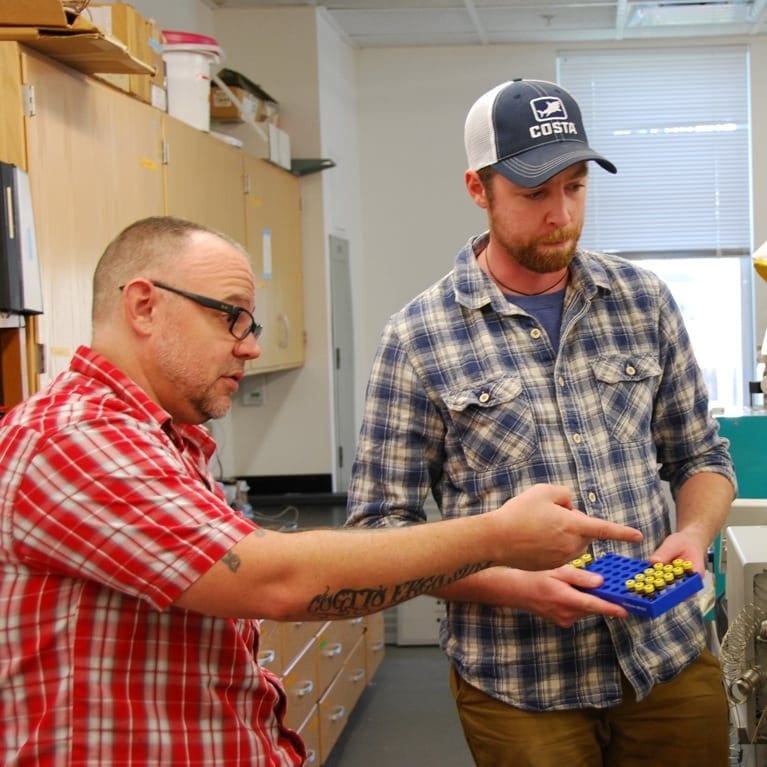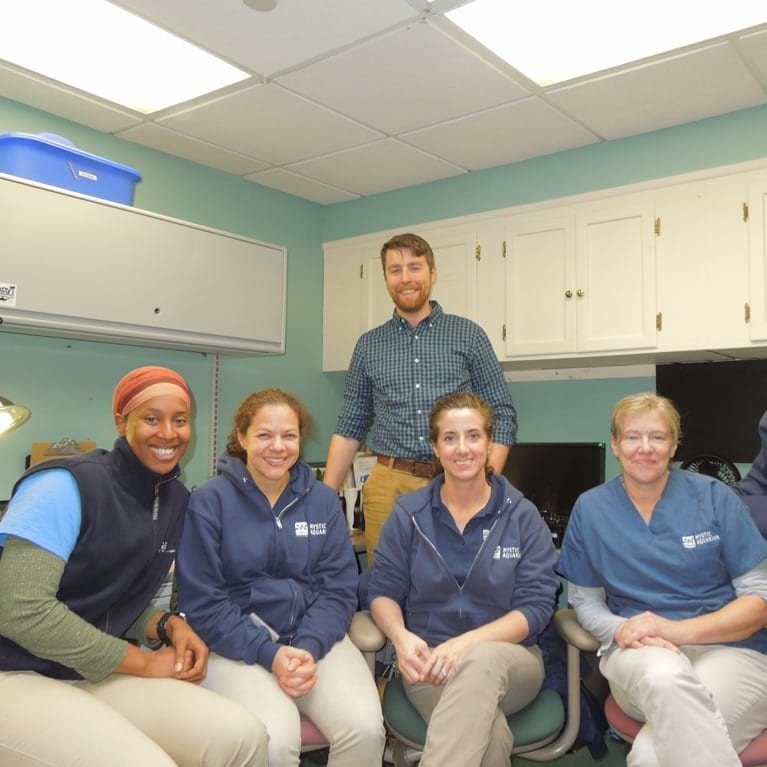What’s on the menu for sharks and rays?
How do we learn about marine food chains when the animals are so difficult to observe? Stable isotope analysis (SIA) shows us what animals eat. Diana will use a new method that combines SIA and amino acids and analyze tissue samples of captive sharks and rays to get a more accurate picture of how this method can be used with wild populations.
If you ask anyone who knew me as a child, they will probably tell you that I talked incessantly about becoming a marine biologist. I was fortunate to grow up in California and spent much of my childhood exploring tidal pools, marvelling at the diversity of species in them and poking at various creatures to see how they would respond. The rocky intertidal zone along the central coast of California is one of the most diverse marine habitats in the world and I had this practically in my backyard. A BSc in marine biology, and later a PhD, made my...




Calibrating an emerging trophic ecology tool for wild elasmobranch populations using aquarium held animals
To use feeding records and blood/diet samples from 3 captive elasmobranch species held in public aquariums to generate robust Trophic Enrichment Factors for these species and to compare how TEFs differ between species and animal size. Also, to engage the public about how aquarium animals can benefit ecological research.
While AA-CSIA is poised to strengthen contributions of isotope analysis to elasmobranch conservation more than ever, robust estimates of how amino acids enrich in elasmobranch tissues are lacking. This paucity of information limits the ability of shark researchers to reliably use this powerful new tool on the wide-ranging predators for which traditional SIA is so difficult. Samples from elasmobranchs with known diets are needed to make these estimates. By working with captive animals in public aquaria, we can generate the needed enrichment factors which will be able to be used not only on the vulnerable focal species (C. taurus/C. plumbeus), but on shark and ray species worldwide. Thus, this project focuses on an indirect conservation challenge: improving the tools available to elasmobranch conservation researchers, particularly those focused on trophic and movement ecology. We believe use of this method will grow quickly, necessitating the need for empirical validation now.
Understanding the role elasmobranch predators play in their food webs is critical to conservation and management. Stable isotope analysis (SIA) has become an important tool in studies of trophic interactions, but is hampered by the need for spatiotemporally contemporary baseline samples. For highly mobile predators like large sharks, collecting baseline samples throughout the animal’s range can be impossible – limiting the utility of SIA to study the feeding ecology of these animals.
Many of the limitations of SIA can be circumvented by using compound specific stable isotope analysis of amino acids (AACSIA). AA-CSIA works by separating the constituent amino acids in a tissue sample and analyzing each individually. This new method takes advantage of the fact that “source” amino acids (AAs) do not become 15N-enriched in a consumer’s tissues, while “trophic” AAs become enriched in 15N with each trophic transfer. As a result, source AAs can be used as an internal baseline and by comparing source AAs with trophic AAs, ecologists can calculate the absolute trophic position of a consumer with only a single tissue sample. Making this comparison, however, requires calculation of a Tropic Enrichment Factor (TEF)- the degree to which “trophic” AAs enrich with each transfer. TEF estimates for sharks suffer from extremely low sample sizes and do not exist for rays. Calculating TEFs for a taxa requires sampling animals with known diets, making aquarium-held elasmobranchs ideal focal animals for this research. By gathering samples from multiple elasmobranch species in aquariums around the USA, we will be able to generate robust TEFs with reasonable sample sizes, allowing AA-CSIA to be used to study wild elasmobranchs worldwide.
- Use AA-CSIA to generate TEFs for multiple shark and ray species under known feeding conditions and with reasonable sample sizes, with the goal of providing the data to allow use of AA-CSIA on wild shark populations.
- Calculate interspecific differences in Trophic Enrichment Factors and determine how confidently a single TEF can be applied to elasmobranchs as a group.
- Evaluate which specific “source” and “trophic” amino acids are most useful in AA-CSIA for elasmobranchs.
- Work with participating aquariums to give public talks and generate online content on the science behind the specific research, how this work helps elasmobranch conservation, and the role aquariums play in conservation research.

